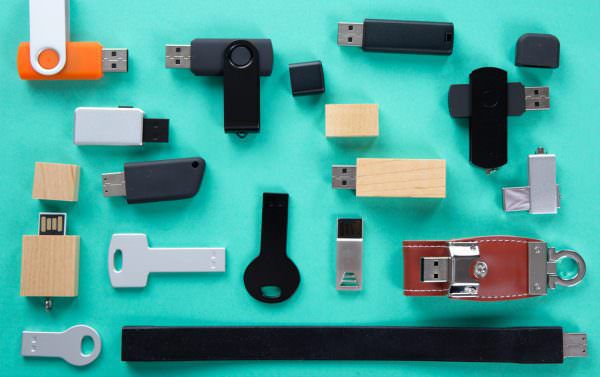
Considering the variety of flash drives on the market, it should be no surprise that they come in varying degrees of quality from the inside out. If longevity and product integrity are the most important features of a USB drive for you, there are a number of buying points to keep in mind before you commit to purchasing.
First and foremost, USB flash drive quality starts at the chip. Every flash drive is originally cut from a larger silicon chip built with mazes of circuitry. The location of where the chip was cut from this original piece will determine the quality. For example, those on the fringe are the least reliable and those cut toward the center are the best.
Tier 1 or Grade A chips are superior and manufacturers will always mark their name and serial number on each one. They have few to zero glitches and are backed by lifetime warranties. Brands like Samsung, Intel, Micron ,and Hynix boast Tier 1 chips.
Tier 2 or Grade B will provide the manufacturer’s signature on a majority of chips. They offer a similar reliability as Tier 1 but will have the occasional failure due to the fact that they don’t endure as rigorous of standards measures. Tier 2 chips are also made for smaller capacity flash drives.
Tier 3 or Grade C chips are made from discarded fringe parts. Third-party vendors buy these from manufacturers and assemble them into flash drives to sell to consumers at inexpensive costs. They are characterized by large failure rates, no warranties, and limited life spans.
The type of flash memory used is also a factor to consider. Single level cell memory (SLC) stores one bit of data per cell while multilevel cell memory (MLC) stores 2 bits of data per cell. As a result, SLC has approximately 2 to 3 times the transfer rate and will last through ten times the write cycles as its MLC counterpart. MLC flash drives are more common because they are less expensive.
Another internal flash drive feature to consider is how the green printed circuit board is attached to the chip. Higher quality USB drives will anchor the PCB firmly into place with posts. A sign of a poorly constructed flash drive will simply glue the printed circuit board onto the chip where it is more prone to come loose from heat or impact and therefore not function.
Since the size of flash drives allows them to go anywhere, they also must withstand the pitfalls of portability. This includes wear and tear. A quality flash drive should be constructed from a durable material such as anodized aluminum or a high-grade, weather-resistant rubber. Such materials will help your flash drive survive drops, smacks, bumps, and extreme temperatures.
A little research can save you a lot of money in failed flash drives or lost data. If you take into account the tier level, data per cell and flash drive housing, you should be on the path to a quality product.
Don’t forget to check out quality USB flash drives at Premium USB.
Do you look at these features when purchasing a flash drive? What else do you look for?
